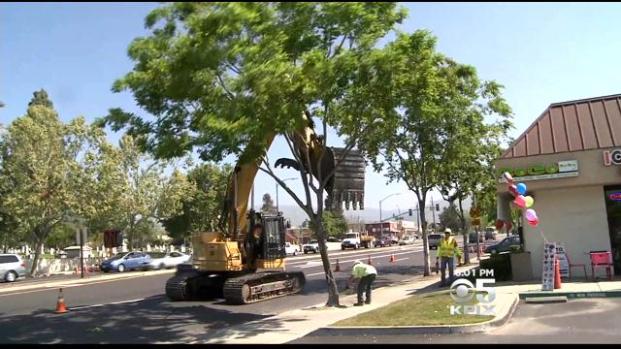Tree removal is always a ugly, touchy topic. Whenever trees need to be removed in a project, by no fail, there will be someone upset about it. People sit in trees for days in hammocks eating granola, people will make posters and stand loyally by trees, people will honk angrily at staff cutting down trees (like in this article)…But why? Why all the anger? I think that this heated issue of tree removal is an example that can be related to a much bigger topic of why we should analytically think about the reasons why we get emotional. Let me explain.
There are a million reasons of why people get upset about trees being cut down. What I am curious is the root of the reason (pun intended). Will the removal of the tree decrease the quality of the person’s daily life? Does the removal of the tree go against their beliefs or values? Or does the removal of the tree symbolize something much bigger, such as the fear for change?
Whatever the reason is, it is crucial to identify it. Emotion is powerful, but also consumes energy for the person feeling it and receiving it. If you can’t back up why you are emotional about something, then why expend your energy in feeling an unjustifiable emotion? If we are able to analyze a feeling we have and be able to identify the core of “why am I feeling this way?”, then we can be much more efficient in what we communicate to others, what we contribute to the world, and conserving our energy for doing a number of other productive things.
Now, to circle back to tree removal, here’s my opinion on the issue from the perspective of a landscape architect. For a little context, the thought that sparked all this was that some street trees downtown are being removed and residents are unhappy. To being with, humans placed a tree in an urban environment–a very hostile environment for a tree. The tree is encased in asphalt which heats the roots, have very confined and minimal soil area = little oxygen and nutrients for the roots to absorb, people step and compact the soil at the base of the trunk in urban environments which can suffocate the tree, the tree could be hit by a car, the tree often has no understory for moisture retention, and so on. The average urban street tree has a life span of 7 years. It is only 7 years because an urban environment is often a very undesirable habitat for a tree! And we, humans, forced it there for our own selfish reasons. Now, if we are again removing a tree for our own selfish reasons, tree planting and tree removal are essentially of same value, and therefore completely neutral.
Now for a shameless plug, this is all coming from a Bus Rapid Transit (BRT) project that I am part of along with my firm and the Valley Transportation Authority (VTA). We helped design planting areas and streetscape/urban design along the 6 mile cooridoor that will help connect San Jose to Santa Clara and ultimately all the way up to Palo Alto, with limited stop rapid bus service. They have already broken ground and is projected for completion fall 2015!































